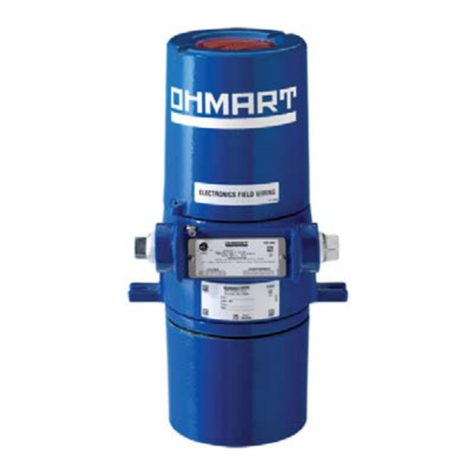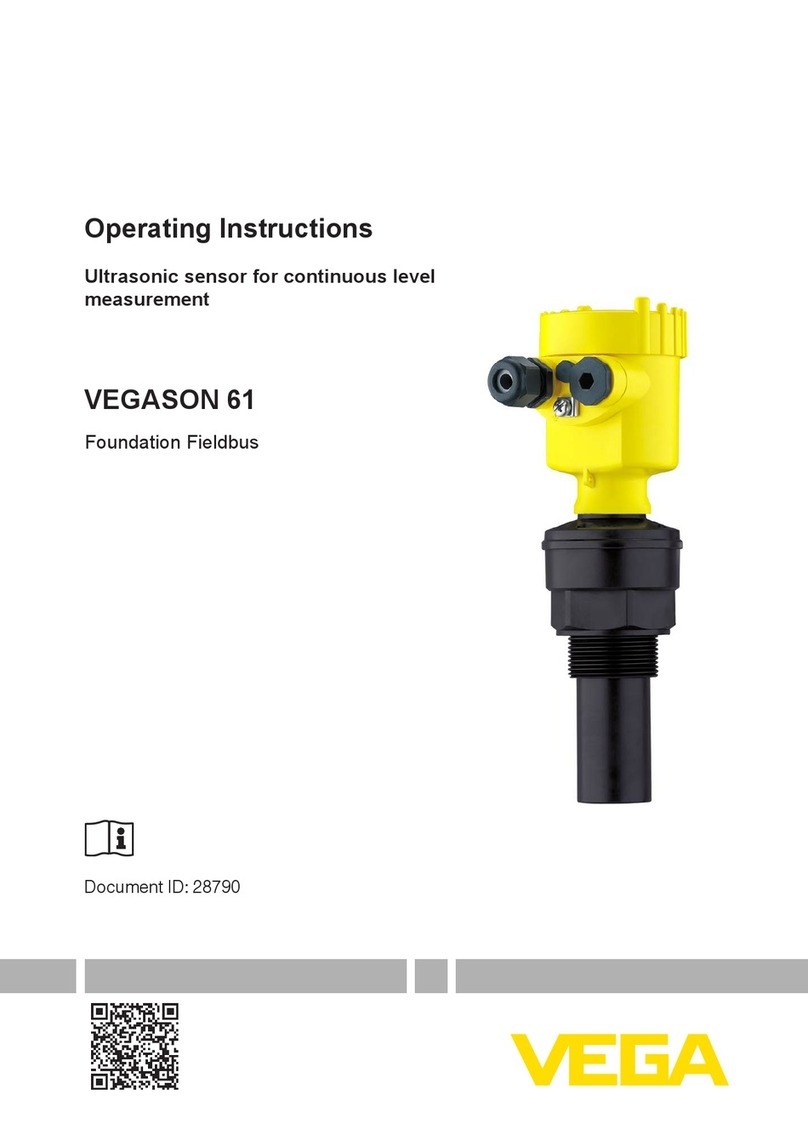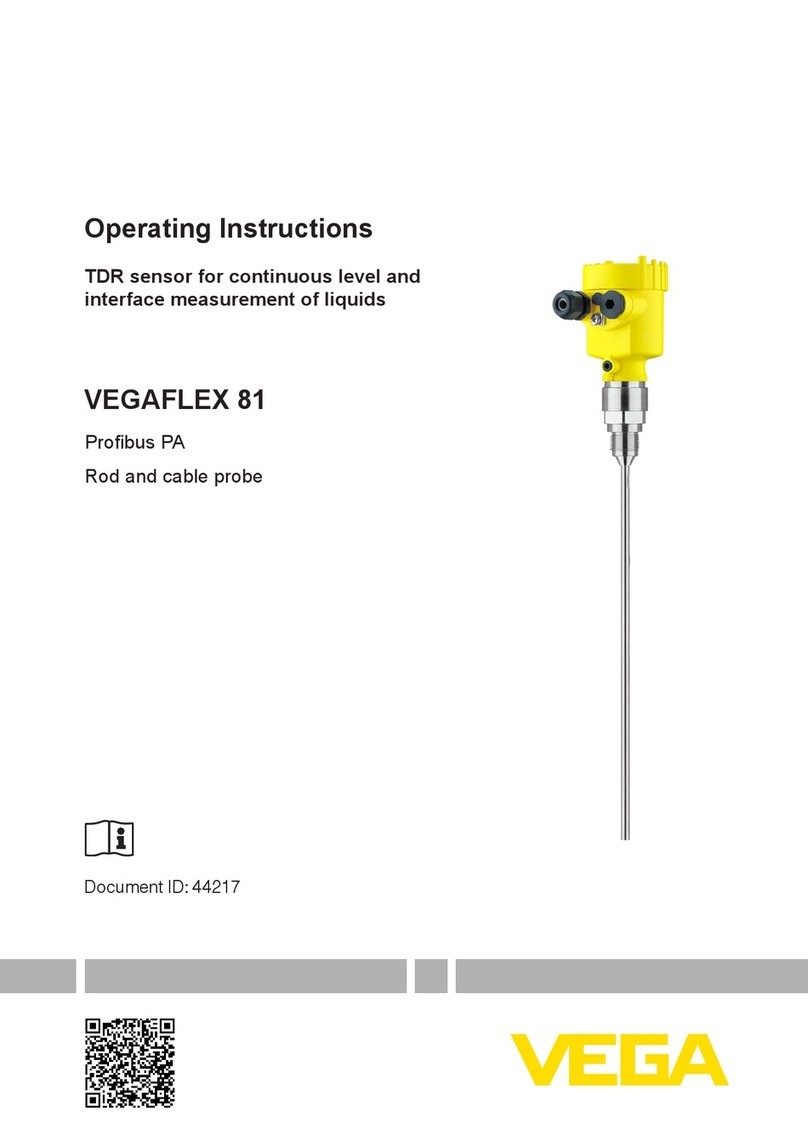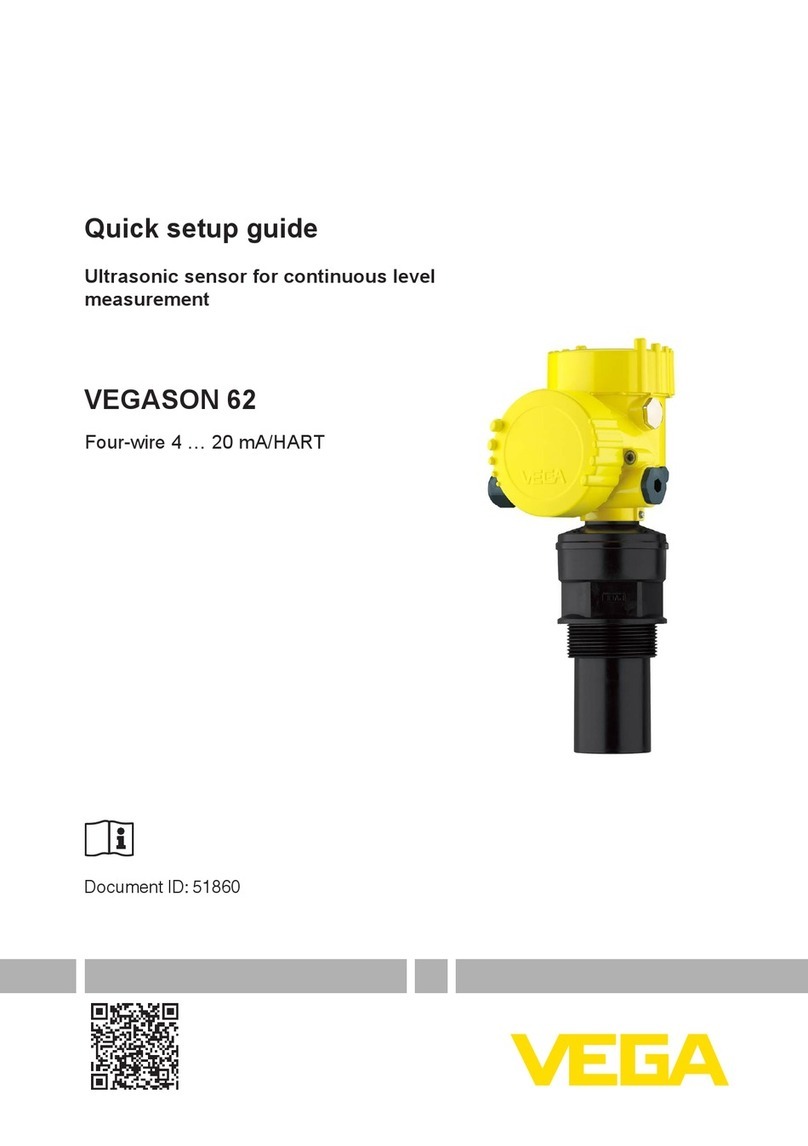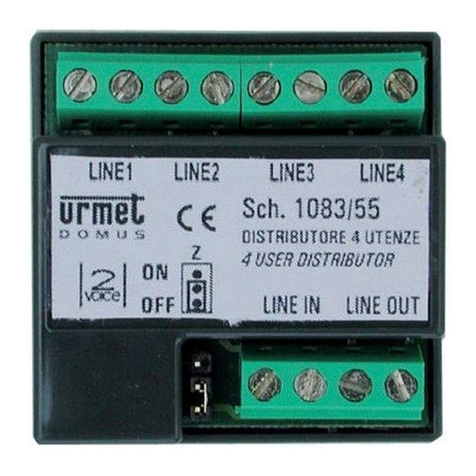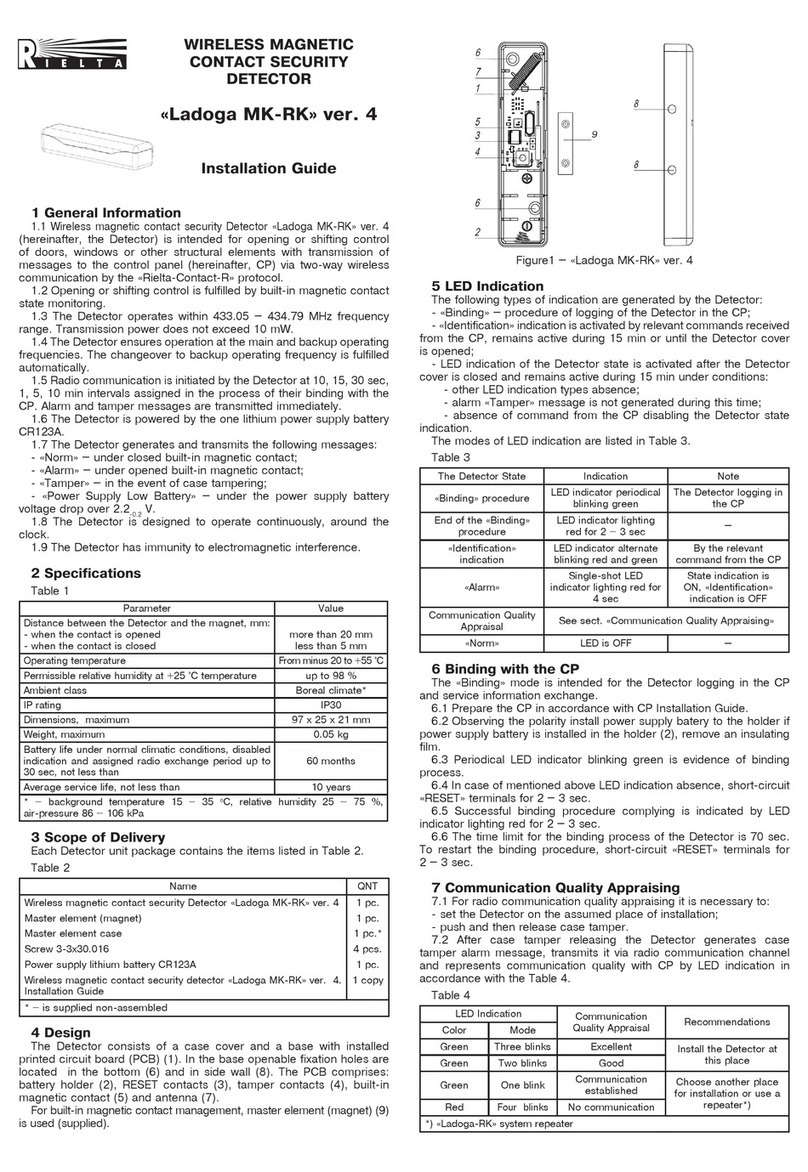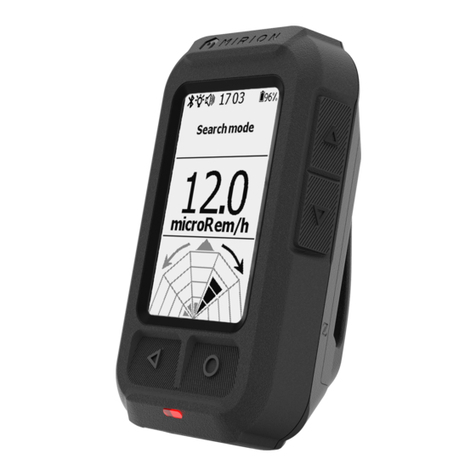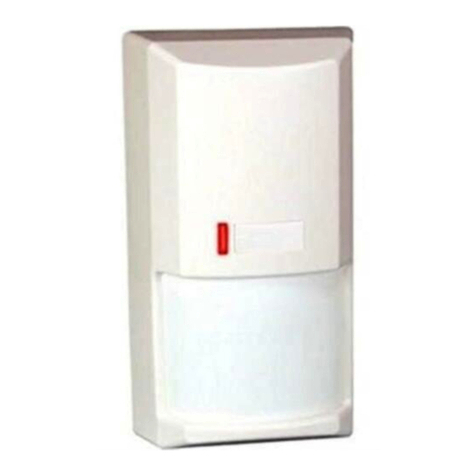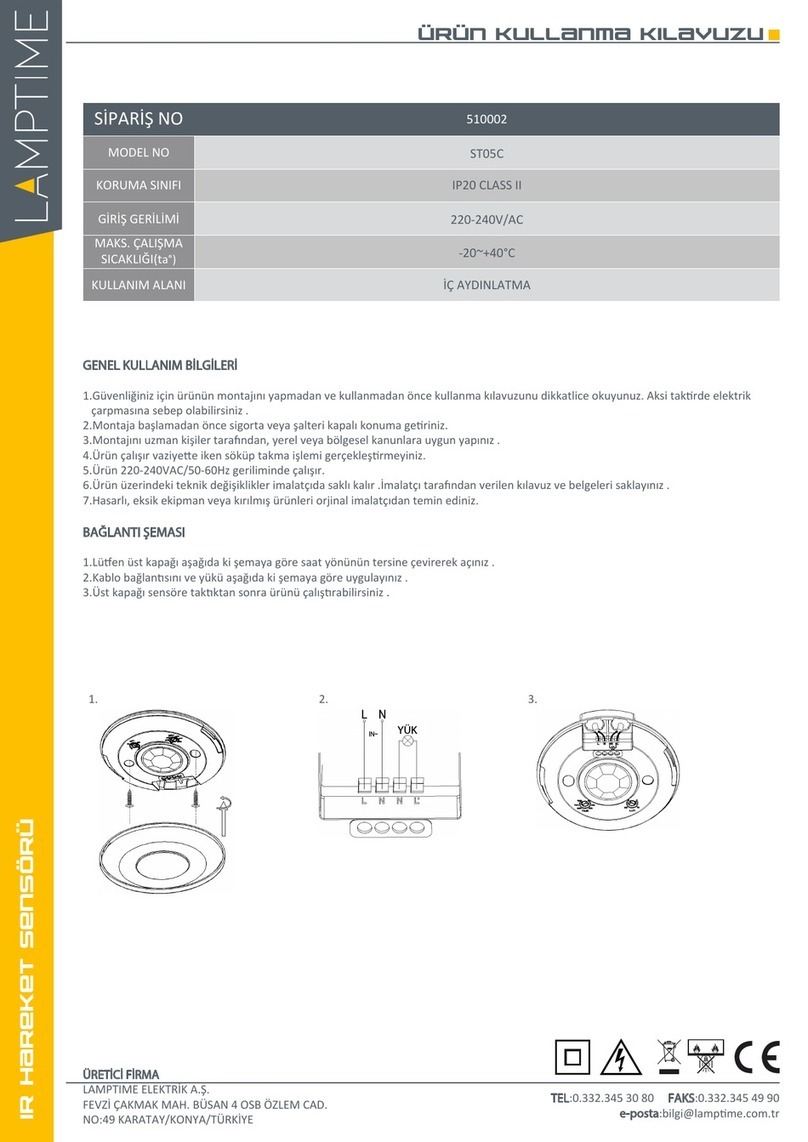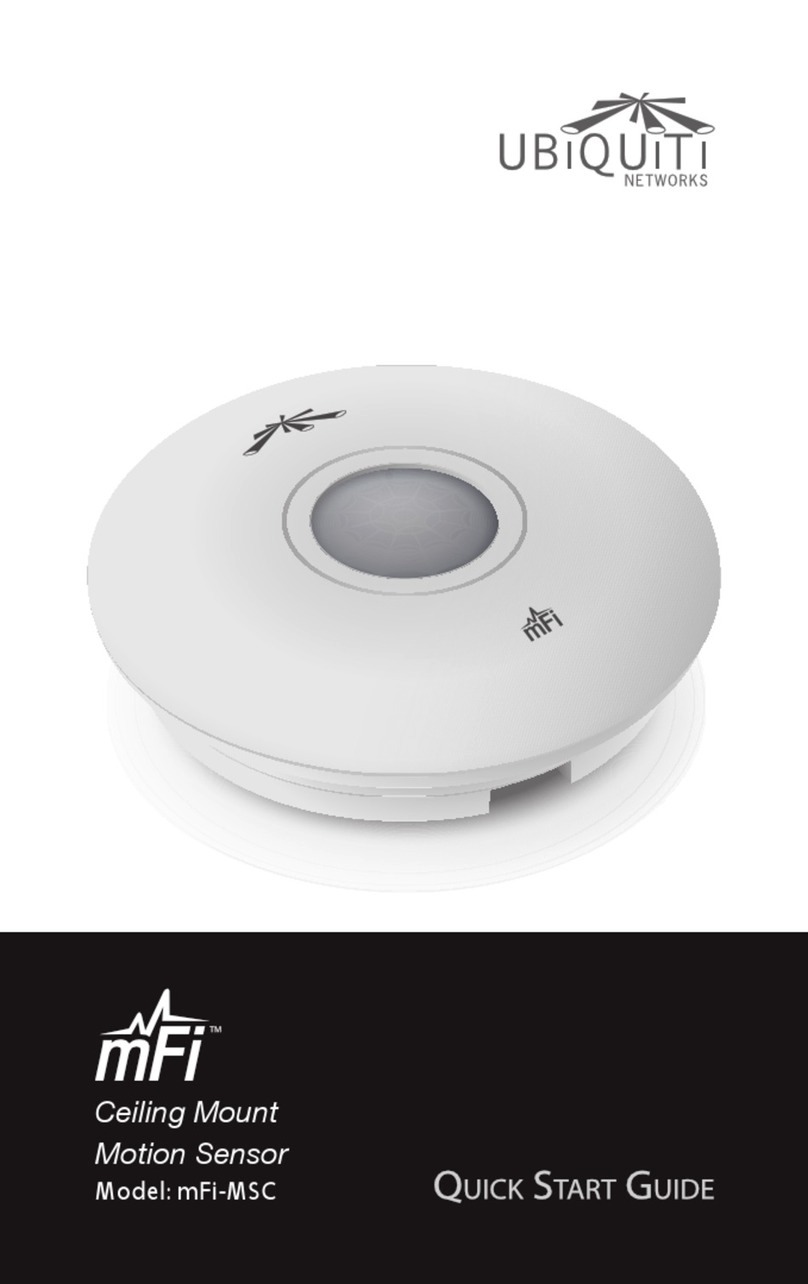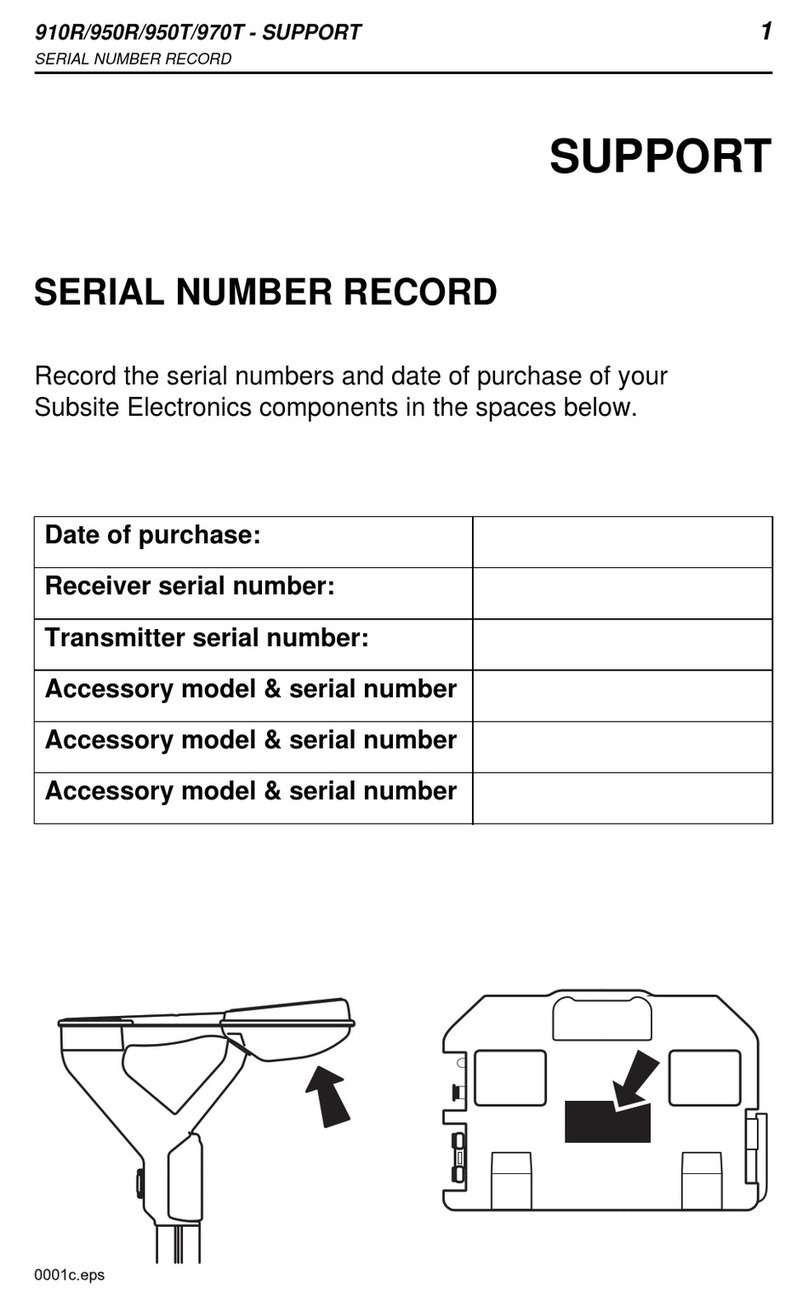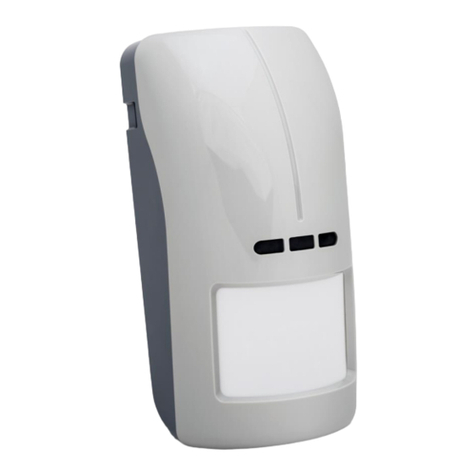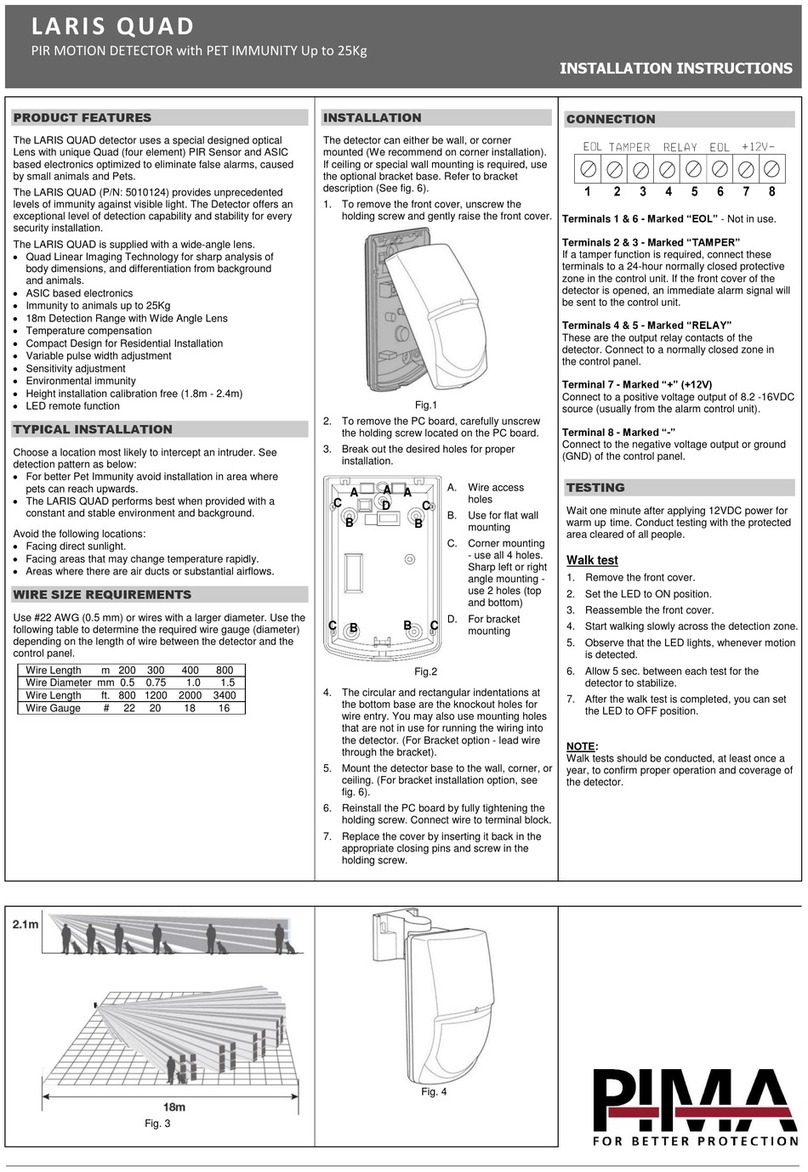
2
Contents
VEGAPULS C 23 • SDI-12
58348-EN-200121
Contents
1 About this document ............................................................................................................... 4
1.1 Function ........................................................................................................................... 4
1.2 Target group ..................................................................................................................... 4
1.3 Symbols used................................................................................................................... 4
2 For your safety ......................................................................................................................... 5
2.1 Authorised personnel ....................................................................................................... 5
2.2 Appropriate use................................................................................................................ 5
2.3 Warning about incorrect use............................................................................................. 5
2.4 General safety instructions............................................................................................... 5
2.5 EU conformity................................................................................................................... 6
2.6 Installation and operation in the USA and Canada ........................................................... 6
2.7 Safety instructions for Ex areas ........................................................................................ 6
3 Product description ................................................................................................................. 7
3.1 Conguration.................................................................................................................... 7
3.2 Principle of operation........................................................................................................ 8
3.3 Adjustment ....................................................................................................................... 9
3.4 Packaging, transport and storage..................................................................................... 9
3.5 Accessories.................................................................................................................... 10
4 Mounting................................................................................................................................. 11
4.1 General instructions ....................................................................................................... 11
4.2 Mounting versions.......................................................................................................... 11
4.3 Mounting instructions ..................................................................................................... 11
4.4 Measurement setups - Gauge........................................................................................ 15
4.5 Measurement setup - Flow............................................................................................. 16
5 Connecting to power supply................................................................................................. 18
5.1 Preparing the connection ............................................................................................... 18
5.2 Wiring plan ..................................................................................................................... 18
5.3 Switch-on phase............................................................................................................. 18
6 Access protection.................................................................................................................. 20
6.1 Bluetooth radio interface ................................................................................................ 20
6.2 Protection of the parameterization.................................................................................. 20
6.3 Storing the codes in myVEGA........................................................................................ 21
7 Setup with smartphone/tablet (Bluetooth).......................................................................... 22
7.1 Preparations................................................................................................................... 22
7.2 Connecting..................................................................................................................... 22
7.3 Parameter adjustment .................................................................................................... 23
8 Setup with PC/notebook (Bluetooth)................................................................................... 24
8.1 Preparations................................................................................................................... 24
8.2 Connecting..................................................................................................................... 24
8.3 Parameter adjustment .................................................................................................... 25
9 Menu overview ....................................................................................................................... 26
10 Diagnostics and servicing .................................................................................................... 28
10.1 Maintenance .................................................................................................................. 28
10.2 Rectify faults................................................................................................................... 28




